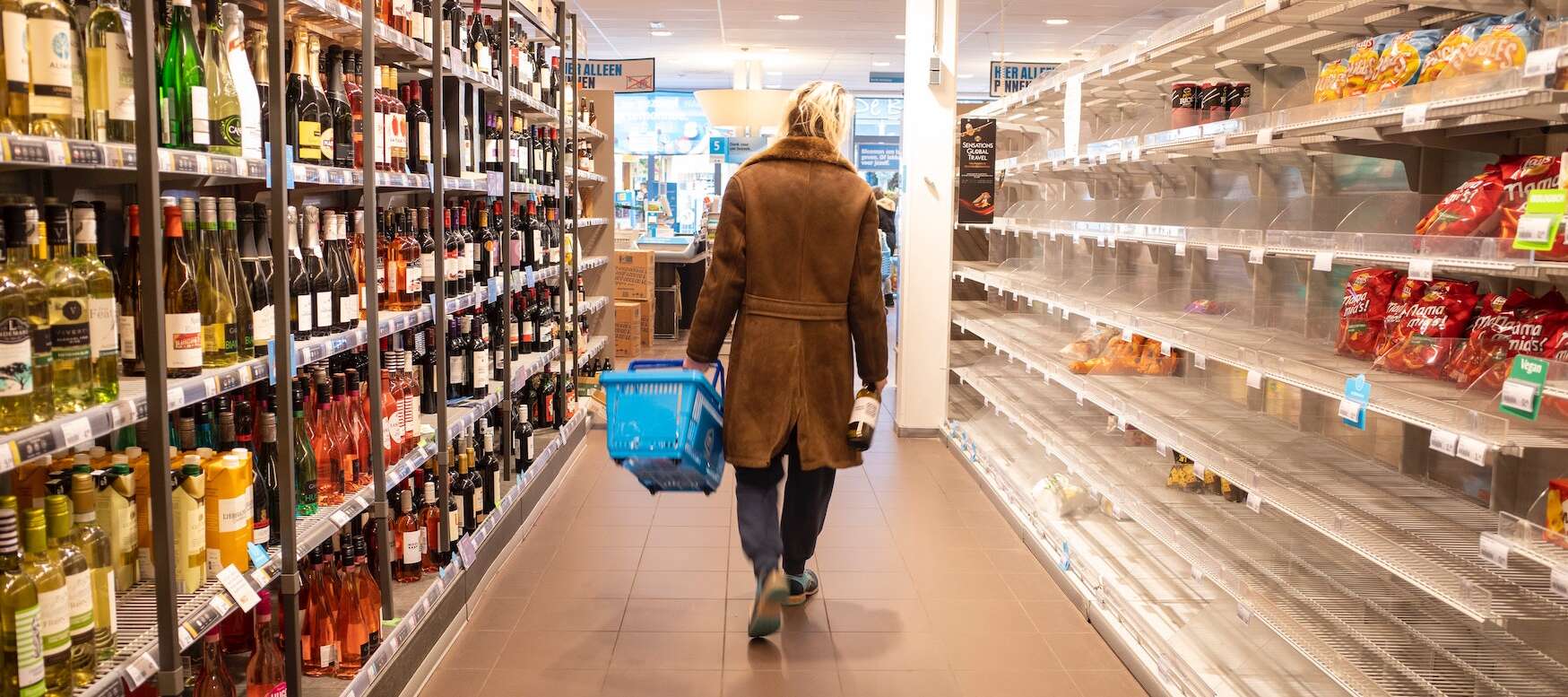By Dr. Evan Fraser, Arrell Food Institute, Department of Geography, Environment and Geomatics
This article is republished with permission from The Globe and Mail. Read the original article.
Earlier this summer, a heat wave closed part of North America’s shipping system. It seems the metal on the Third Avenue Bridge in Manhattan swelled so much that the bridge couldn’t close, causing one observer to point out that “we built our world for a climate that no longer exists.”
Along with transportation, another major system is also struggling. Daily, we all turn to the food system to keep our bodies nourished. Unfortunately, the food system is perilously fragile.

When floods cut off roads and rail services in British Columbia in 2022 and hence cut off entire communities from the North American food supply, we find ourselves in a situation where we can’t survive without nutrition moving smoothly to us from all corners of the world. But most grocery stores have only a few days’ worth of inventory. Fresh produce is especially time sensitive. Our current system, predicated on a just-enough-just-in-time philosophy, leaves society continually on the verge of running out. Some say that because of this, our world is always only “nine meals from anarchy.”
This would be a problem in any decade. It’s especially worrisome today because, much like the New York bridge was built for a climate that no longer exists, our food system was created to serve a world that no longer exists either.
The roots of this conundrum are in the 1950s and 60s when new technologies – including better fertilizer, more powerful irrigation and tractors, affordable refrigeration, efficient transportation, and higher-yielding seeds – transformed farming. With farmers producing so much more, and long-distance trade becoming easier, we built a system based on ever-productive specialized regions shipping food everywhere. This system, miraculous in so many ways, also needs cheap energy to create fertilizer, power tractors, pump irrigation, and move fleets of trucks, planes and ships all over the world.
But while easy trade, a productive environment and stable energy prices were a hallmark of yesterday, they aren’t in evidence today. And no one is betting that the 21st century will calm down any time soon. With the climate crisis poised to destabilize farming, nationalistic governments restricting trade, and yo-yoing energy prices, the safe bet is that this century will be marked by massive disruptions.
Farmers becoming more climate resistant
Luckily, farmers have more tools at their disposal than ever before to shorten supply chains and become more climate resilient: Retractable awnings shade many orchards during high temperatures. Specially bred indoor strawberries in greenhouses now grow under LED lights when the days are too short. New soil amendments make fields healthier and able to keep crops growing even during droughts. Vertical farms produce green leafy vegetables close to consumers year-round.
But will all these new technologies be enough to withstand climate change? Almost certainly not – these tools give farmers greater control over problems such as droughts, pest outbreaks and heat waves, but they are only a partial solution.
For one, we need to train farmers in new ways. Equally, we need insurance programs to buttress farm incomes from the inevitable years when nature overwhelms our ability to adapt, financial incentives to help farmers afford new tools, supports for Indigenous communities who are rebuilding traditional food systems, and land use and zoning to encourage more food production and processing close to consumers.
Pressure on food banks
Helping protect consumers is just as vital and we need a much better social safety net to protect low-income families from the effects of food price rises – relying on the overtaxed charitable food banking sector is wrong.
Just like in the energy system, where engineers now suggest more decentralized grids can create more resilient systems with fewer “single points of failure,” we need a food system that is more diverse and tolerant of extreme weather. We need a mixture of both robust global and vibrant local supply chains.
If we invest now, we can build such a portfolio of food systems that will be fit for the challenges of the 21st century. If we do this, perhaps we can keep anarchy at bay for a few more years yet.
